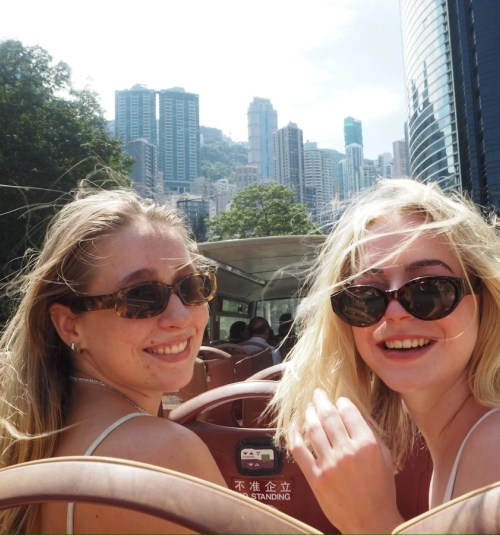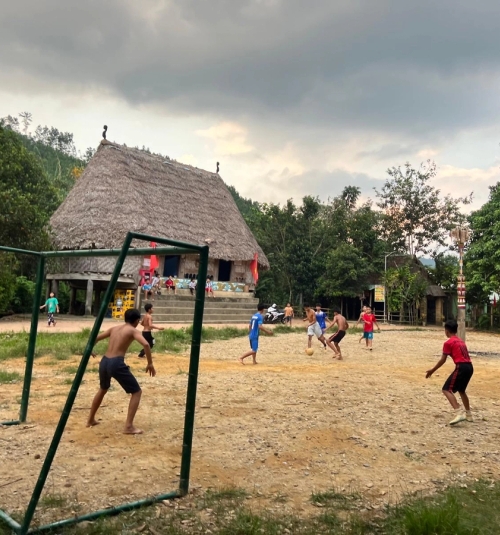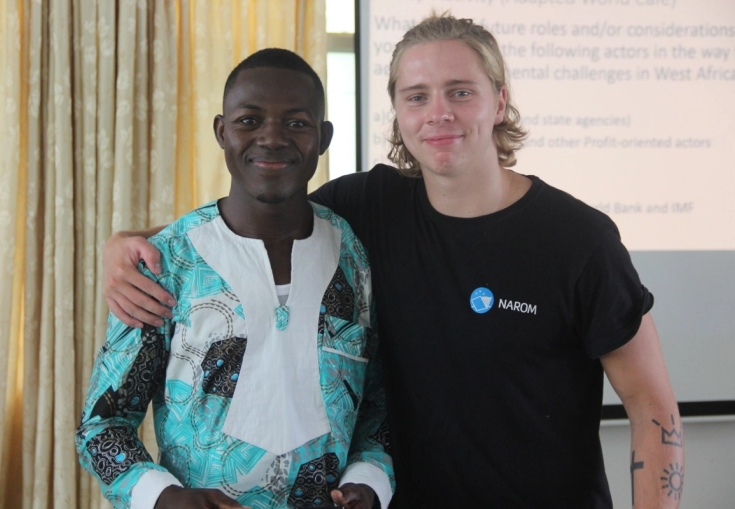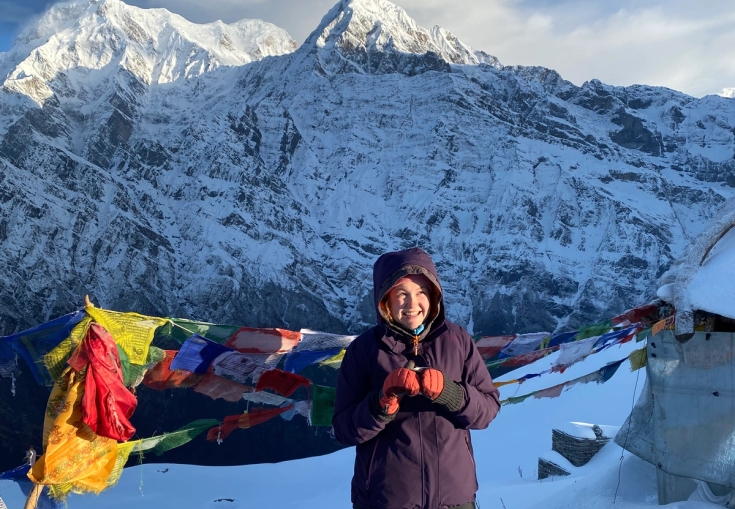
Survival guide: Mardi Himal

Nepal is much more than just mountains. However, it must be mentioned that the hiking trails around Pokhara are world-class with the Himalayas as the nearest neighbor.
One of the most famous trails is Mardi Himal. This is a 4-5 day mountain trek with an elevation gain of about 2100 meters. This semester, we were a large group of 15 who attempted this much-talked-about trek, and I thought to provide a survival guide with tips and tricks based on our experiences.
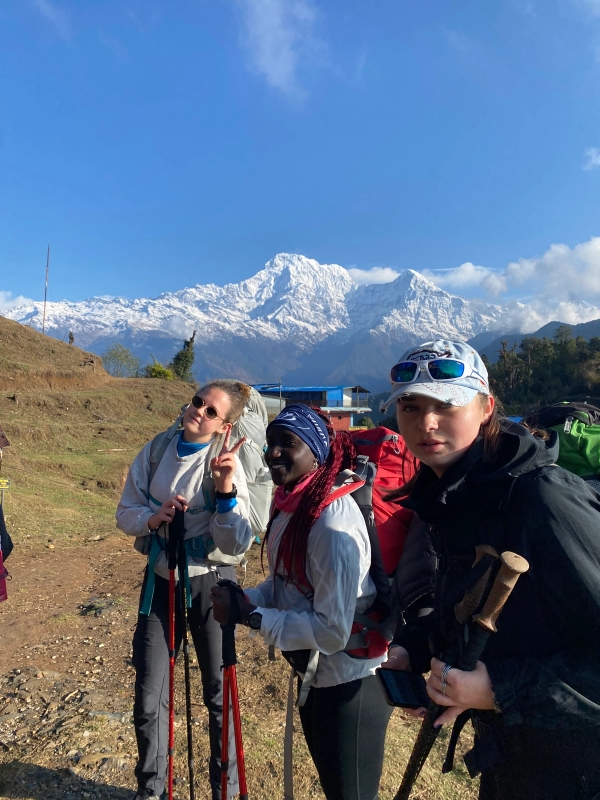
Mardi Himal is a trek that can be nicely ascended by inexperienced hikers; as long as one keeps their wits about them, is accompanied by a good and supportive group, and takes certain precautions.
The journey may feel long and physically demanding for some, but the view along the way is impeccable in good weather.
Mardi Himal extends from small Nepalese villages through rhododendron forests and beautiful terrain, all the way up to the snow-covered mountain peaks of the Himalayas. On a clear day, it will feel like walking through a postcard with panoramic views of the mountain range on both sides of the trail. This is part of the reward for embarking on the Mardi Himal trek.
There are several ways to trek Mardi Himal.
Since most of our group had already visited Australian Base Camp and Kande, we decided to rent two jeeps and drive up to Deurali Camp.
Here we spent the night before we the next day took the first leg from Deurali to Low Camp which is situated at 2600 meters above sea level. This is probably the longest and most strenuous leg of the entire trip. Furthermore, we spent a day from Low Camp to High Camp, and also the last day from High Camp to Viewpoint and back down to Siddhing Camp.
It is important to point out that the reason why all 15 out of 15 people reached the summit without suffering from altitude sickness was due to how we chose to approach Mardi Himal. Here are 5 tips that were crucial for getting everyone up to the View Point:
1. Pack the right clothes
There is a fine balance between packing enough clothes and too many clothes. When you're going to hike for four days, you want to avoid packing extra weight that you'll have to carry up the mountain. At the same time, you want to avoid getting cold when you reach the higher altitudes. Do research on the weather and temperature so that you can avoid getting sick on the way up or having an unnecessarily heavy backpack.
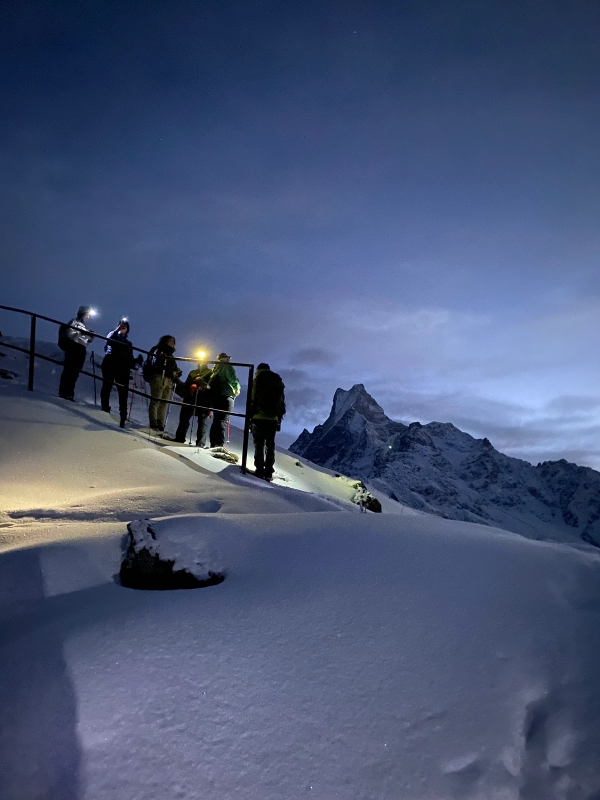
2. Eat and drink enough along the way
Running out of energy on a long mountain hike like Mardi Himal is a big mistake. Pack enough snacks and food so that you don't run out of energy halfway through the hike.
It will be possible to get refills of water and food at several of the camps along the way, and I would recommend you take the time to eat good and nutritious meals. It's worth noting that snacks and water become more expensive the higher up the mountains you go, so if you want to save money, you can buy snacks in Lakeside before heading up.
3. Book camp for the next day
We traveled in the off-season, so for us, there were plenty of vacant bedrooms at all the camps. However, if one treks during the fall, there will be significantly more 'competition for spots'. What we did before we started the next day was to have the owner of the camp we stayed at book enough rooms and/or sleeping spots for the next camp. By doing this, we ensured that we were all assigned beds at the same place.
4. Walk slowly to avoid altitude sickness
If there's one thing you want to avoid on mountain hikes like this, it's getting altitude sickness. The Himalayas are probably not the most comfortable place to get sick, as you may not have access to running water or heated bedrooms.
The risk of altitude sickness begins at around 2500 meters above sea level. From this point on, it is especially important to eat and drink plenty, and to consider bringing electrolytes.
Furthermore, one should walk at a provocatively calm pace to avoid getting a high pulse or sweating. Do not ascend more than 600 meters each day. If you experience altitude sickness along the way, there is no shame in turning back; on the contrary, it is something you should do if you feel unwell.
5. Be considerate of each other and stick together
Being meticulous about safety considerations in the mountains is incredibly important. Despite the varying fitness levels of people in the group, it's crucial that no one hikes alone when there's a risk of altitude sickness. For our group, the key to everyone reaching the summit and having a great trip was that we walked very slowly, we stayed together, and we were considerate of each other.
I hope these tips will be useful for future trips to Mardi Himal. Although it may sound tough to get to the View Point, it is absolutely worth it. The view and the sunrise over Fish Tail are something many only dream of, but if you move to Pokhara, you will have the opportunity to experience this.
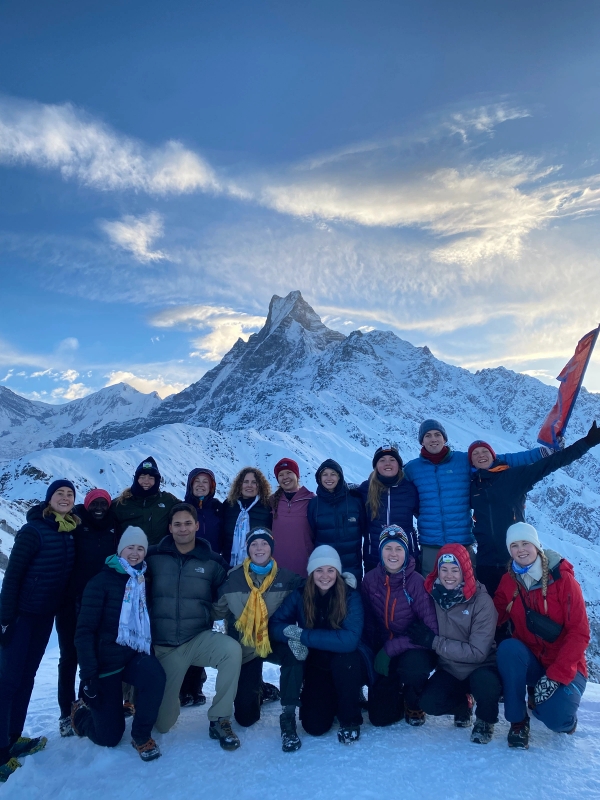
With that, I believe we can say we are satisfied with our trip. Best of luck on your journey up the Himalayas!
